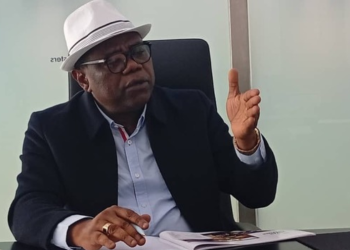In Ann Arbor, Michigan, the city council is considering a vote next month to revise traffic laws governing reasons for pulling someone over, aiming to reduce racial profiling incidents.
The proposed Driving Equality Ordinance seeks to differentiate between routine traffic stops and the potential consequences of incarceration for Black, Indigenous, and People of Color (BIPOC) individuals. Under this proposal, police officers would no longer have the authority to initiate minor offense-related stops, such as for a cracked windshield.
The nature of traffic law enforcement is undergoing significant changes in response to concerns about racial profiling and the need for improved road safety.
Also, innovative approaches are being explored, like the use of text messages in Washington, D.C., to reach out to known high-risk drivers and alert them about the dangerous driving behavior occurring within their household.
With the evolution of cars, drivers, and traffic regulations, law enforcement strategies must adapt accordingly.
Across the United States, the landscape of American roads is changing. Discussions surrounding the most effective methods for conducting traffic stops by police officers, as well as the surge in traffic fatalities during the pandemic, have spurred alterations in strategies to enhance road safety for all individuals.
Some cities are taking steps to limit or even ban minor traffic stops, such as those related to broken taillights or hanging air fresheners, in order to address the issue of racial profiling.
These changes are being observed not only in Michigan but also in New York and other locations.
In the case of Ann Arbor, the City Council’s unanimous vote in favor of the proposed law reflects their commitment to reduce the potential negative outcomes associated with pretextual stops.
Minor offenses disproportionately affecting people of color, with negligible contributions to public safety, have prompted this legislative action.
The statistics indicate that more than a quarter of individuals killed in traffic stops are Black, despite Black people comprising only 12 percent of the population.
Lisa Jackson, the founding chairperson of Ann Arbor’s Independent Police Oversight Commission, highlights the concerns faced by individuals during traffic stops, questioning whether they are being targeted based on their race or if they genuinely committed an offense.
Scheduled for an early July vote, the proposed law in Ann Arbor aligns with similar legislation previously enacted in larger cities such as Pittsburgh and Philadelphia.
These cities have recognized the need to address racial disparities and the potential harms associated with minor traffic stops. By implementing these measures, they aim to foster a fairer and more equitable approach to traffic law enforcement.
Meanwhile, Washington, D.C. has opted for a distinct strategy to address traffic violations, crashes, and fatalities. Collaborating with The Lab @ D.C., a division of the city government, the Department of Transportation is employing text messages and physical mail to communicate with drivers who have received traffic citations or committed violations.
These personalized messages aim to encourage drivers to reflect on their actions by providing specific details about their vehicle, previous violations, and a warning about the increased crash risk associated with their driving history.
Read more on Self-driving cars: An expert’s perspective on how they work










![An Airbus A320neo takes off for its first test flight [File AP]](https://autojournal.africa/wp-content/uploads/2025/12/An-Airbus-A320neo-takes-off-for-its-first-test-flight-File-AP-350x250.png)









![British Airways [Photo Credit British Airways]](https://autojournal.africa/wp-content/uploads/2023/05/British-Airways-Photo-Credit-British-Airways-120x86.jpg)
